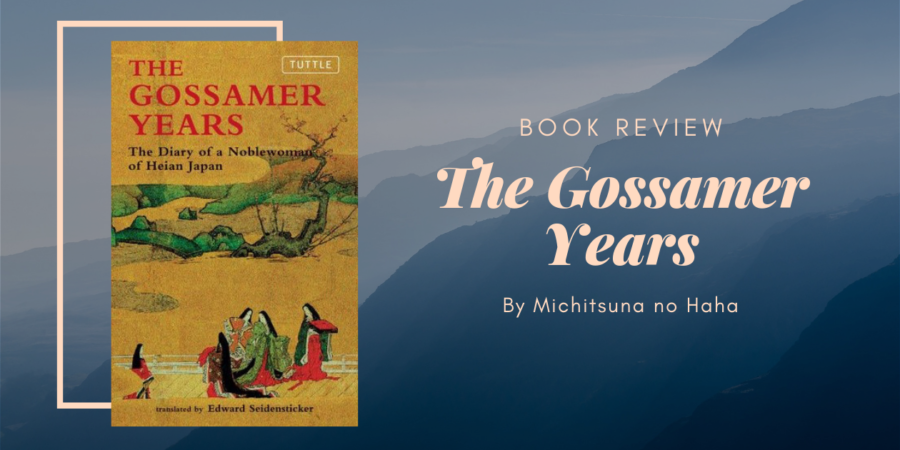I may have finished The Tale of Genji, but there’s still so much about Heian Japan for me to explore. One of them is The Gossamer Years, the diary of the Heian noblewoman. This woman was connected to both Sei Shonagon (author of The Pillow Book) and Murasaki Shikibu (author of The Tale of Genji) and her diary was likely to have been read by Murasaki. In fact, this diary is said to be “the first attempt in Japanese literature, or in any case the first surviving attempt, to capture on paper, without evasion or idealization, the elements of a real social situation.” Literary merit aside, I found this to be an entertaining read.
The Gossamer Years covers two decades of the lady, Michitsuna no Haha’s life, starting from the beginning of the Prince’s courtship with her. Since it’s based in real life the footnotes often refer to real life events, something I found very cool.
One thing to keep in mind is that this is a diary that Michitsuna no Haha wrote about herself and hence, it’s very subjective. For example, she portrays herself as being disinterested in the Prince from the start, but the way she writes about his long periods away and her jealousy at his other affairs shows that she does care. She’s just trying to make herself seem cool in the “I didn’t actually care about him nya nya nya” way.
I also saw echoes of The Tale of Genji in this – the way Michitsuna wrote about The Prince’s philandering reminded me about Genji and his various affairs. Her emotions of jealousy and anger and sadness must be similar to those of the women who Genji loved and left behind. And the way Michitsuna no Haha wrote a sympathetic note to the main wife when she realises that the Prince had yet another lover? It reminded me of the notes that Murasaki writes to the other women and got me to realise how these rivals could have ended sympathising with one another.
If you read this, get the one with the note on retranslation in the introduction. I thought the introduction to give a good overview of the book and its place in Heian Japan, and the section on translation was eye-opening as well. Seidensticker talks about the challenges of translation, especially with an ambiguous language like the Japanese used in that day. In particular, he talks about how the aims of the translator can influence the translation – showing that there is more than one way to translate the text and that the translation you choose can differ based on your motive for reading.
Overall, I really enjoyed reading this. The author may be self-interested and unreliable, but her emotions are real and I found that this gave me a glimpse into mindset of a woman in Heian Japan. Considering that the women in Genji were the ones that held my sympathies the most, knowing more about the way they think and felt provided a much-needed window into their psyche.
